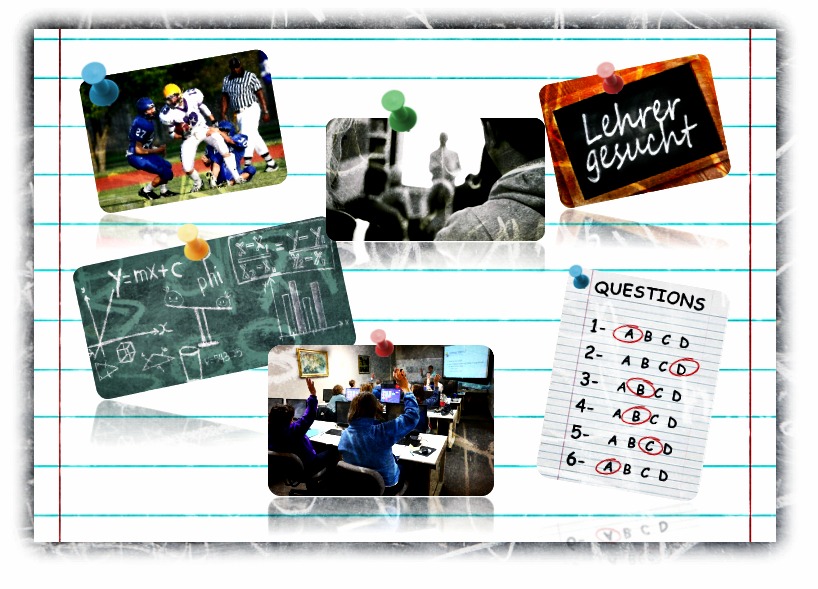In this topic, you are going to practice the structure “modals of deduction”. This grammatical tool is used to express how sure we are about something.

Ballesteros, A. (2017). Modals
It is recommendable that you follow the order given to understand the use of the structure clearly. Not only you are practising grammar, but you are also developing your speaking, reading, listening and writing skills.
At the end of the learning tasks, you are taking a test to verify how well you are using the new structure. Remember that the more you practice, the more you learn.
By the end of this topic, you will:
• Use the grammatical structure “modals of deduction” to offer sure or possible conclusions drawn from diverse situations happened in the past, present or future.
Look at the following grammar information in order to understand the topic. It's important that you make your own notes in order to internalize the information provided.
According to the previous grammar explanation, answer the following diagnostic exercises.
What do you do in your leisure time?
Do you like working out?
Do you practise any sport?
You are going to select the correct modal of deduction to complete the following sentences. Modals cannot be repeated in this exercise.
How easy is it for you to come up with a deduction? People in a sports centre are inferring something related to exercise; you are going to put the words to give sense to the sentences.
Now that you are a master in modals of deduction, how good are you at predictions? Is it a piece of cake or put you in-depth?
Choose the correct option to complete the following sentences correctly. Notice if it is a present state, an action in progress or a past action state.
Activity 1
You are going to read a story about a guy and his first impression at high school. Does that ring a bell to you?
First, scan the text, write down all the words you don’t understand and look them up in an English-English dictionary, here are some options:

McLarnon, E. (2013). College. [Photo] Retrieved from: https://pixabay.com/en/trinity-college-dublin-234504/
Click here to read This can’t be true.
Now, based on the text, choose the correct option to answer the following questions:
Activity 2
Based upon the text, number the events 1-10 as they happened in the reading “This can’t be true”:
Activity 3
Based on the text, number the events 1-10 as they happened in the reading “This can’t be true”:
Activity 4
Modals of deduction are essential, read the following grammar information:
Use “modals of deduction” to offer certain or possible conclusion drawn from diverse situations.
Have you ever tried to give an explanation to something you are not sure about?
Or have you ever explained something you are entirely sure about someone or something?.

Altman, G. (2013). Empresa. [Photo] Retrieved from: https://pixabay.com/es/siluetas-los-hombres-empresa-142329/
Listen to some deductions people offered to different situations, pay attention to how modals are being used.
Click to listen:
Activity 5

Ballesteros, A. (2017). School
Read the following sentences. Most situations have happened in a school context. Drag the different options of modals to the appropriate spaces to complete the sentences. You have two attempts to answer the exercise. You can know your score at the end.
Activity 6
Some things in your school locker are missing, but you know you left everything locked when you used it this morning. There are not any signs of forced entry on someone breaking in. To recover your things, the school principal needs a letter from you. You have to be very descriptive as to where and what they were?

NA. (2016). Gabinete. [Photo] Retrieved from: https://pixabay.com/es/gabinete-primer-plano-interior-1866433/
Write a 200-word letter, including the grammatical points you have explored.
Please, make sure it has the characteristics contained in the rubrics.
Check the following example.
Activity 7
You are going to listen to people having a conversation, which includes deductions (modals of deduction). Next, complete the conversation choosing the correct option.
Click here to listen:
Activity 8
Do you consider yourself a good soother? Let’s test out your skills. Read the following situations, select one and record your opinion using modals of deduction to offer a conclusion.

Please, make sure it has the characteristics contained in the rubrics to have a self-evaluation later.
Click here to listen to an example.
Exercise 1
Select True or False according to the modal used in each sentence.
Remember that we use “modals of deduction” to express how sure we are of something.
Exercise 2
Using what you have just learned about modals of deductions, drag and drop the sentences to the appropriate space, so both columns have the same meaning written in a different form.
English Grammar Online. (2017). Modal Verbs and their substitutes. Website:
https://www.ego4u.com/en/cram-up/grammar/modal-verbs
Perfect English Grammar. (2017). Modal Verbs. Website:
http://www.perfect-english-grammar.com/modal-verbs.html
British Counsil. (2014). Modals, dediction (Present). Website:
http://learnenglish.britishcouncil.org/en/quick-grammar/modals-deduction-present